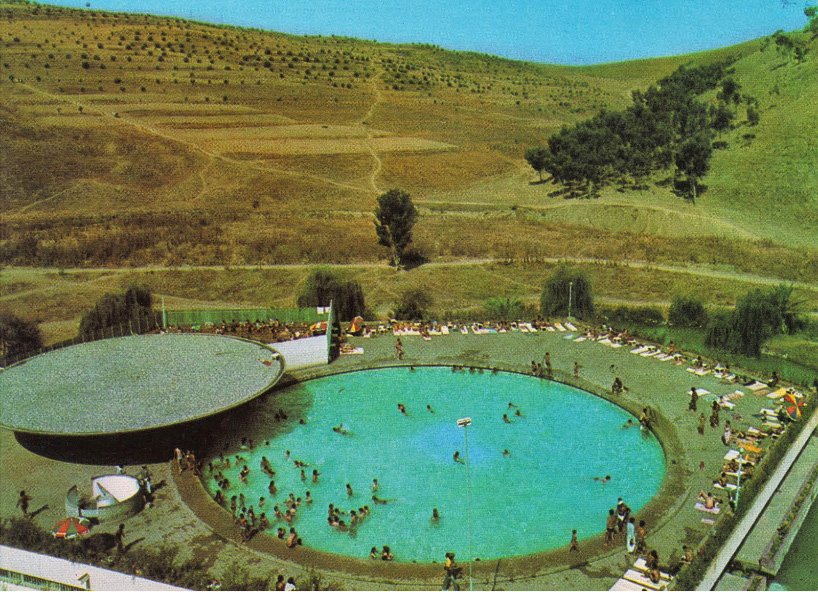5 Uniquely Shaped Buildings From Across the Arab World
Architecture nerds who love weirdly, wonderfully and iconically shaped buildings will enjoy learning more about these distinct buildings from across the Arab world, which we celebrated in a week of culture posts on our Instagram. If you have more facts and resources about any of these buildings, comment below — we’d love to learn more and grow this resource.
Hotel Du Lac, Tunis
Image credits 1) Reddit 2) Architectuul
When it was first built in the 1970s, Tunis' Hotel du Lac was seen as a symbol of a new modernist era. The brutalist-style building was designed by Italian architect Raffaele Contigiani, and has a characteristic "top-heavy" design. Each floor protrudes further out than the one below it, which means that the top floor has a width that's double that of the ground floor.
Central Bus Terminal, Abu Dhabi
Photograph by Darren Bradley Photography
Abu Dhabi's central bus terminal was designed by Bulgarian architect Georgie Kolarov in 1989. @find_uae describes the concrete waves of turquoise as "evocative of a type of modernity that stands somewhere between a sparse, Niemeyer-inspired 'world of curves' and the cool majesty of Eero Saarinen’s Dulles Washington International Airport." (f-in-d.com)
Apparently, municipality chief engineer, Alfi Girgis, said that the building was inspired in part by the "shell roofs" of the Sydney Opera House: a comparison that would have been more apparent when the terminal was white.
Villa Badran, Cairo
Image credits: 1) Arch Daily 2) Scene Home
Located on Sudan Street in Cairo's Mohandiseen, Gamal Bakry's Villa Badran stands out with its distinctively organic and curved form. It was originally designed with a middle-class family in mind, and was later converted into a restaurant that was subsequently abandoned.
As Nour Fakharany describes in an article on Arch Daily, "while Egyptian architects were exercising their understanding of modernism in the urban fabric in the 70s, a 'chubby rebellion' in the form of Villa Badran defied the standardized curvilinear forms and rigid geometry."
Sidi Harazem Thermal Bath Station
Image credits: 1) Architectural Record 2) @jmolowny on Twitter 3) Design Boom
Jean-François Zevaco designed his Sidi Harazem Thermal Bath Complex in the 1960s. Built in a post-colonial Modernist architecture style, the complex created different types of public spaces and leisure facilities in a brutalist style that still evokes Arab culture all at once. According to Aziza Chaouni Projects, it is the first public example of post-independence architecture designed for locals.
We also read that architect Azizi Chaouni Projects has developed a masterplan for the rehabilitation and preservation of the site with a Getty Foundation Keeping It Modern Grant. You can explore old and new images of the complex on the project's instagram page: @zsidiharazem
El Ikhwa Building, Khartoum
Image via Canadian Center for Architecture
Khartoum's El Ikhwa building was built in 1970 and designed by Abdelmoneim Mustafa: a distinctive diagonal construction punctuated by large stacked balconies that – as an article on the Canadian Centre for Architecture's website explains – provide sun-shading and are alternated for air circulation. Does anyone know more about this building or others that we should feature from Sudan?
Podcasts To Watch About Architecture in the Arab World
If you’re looking to dive deeper into architecture or city and urban planning around the Arab world, here are a few podcast episodes to get you started.













